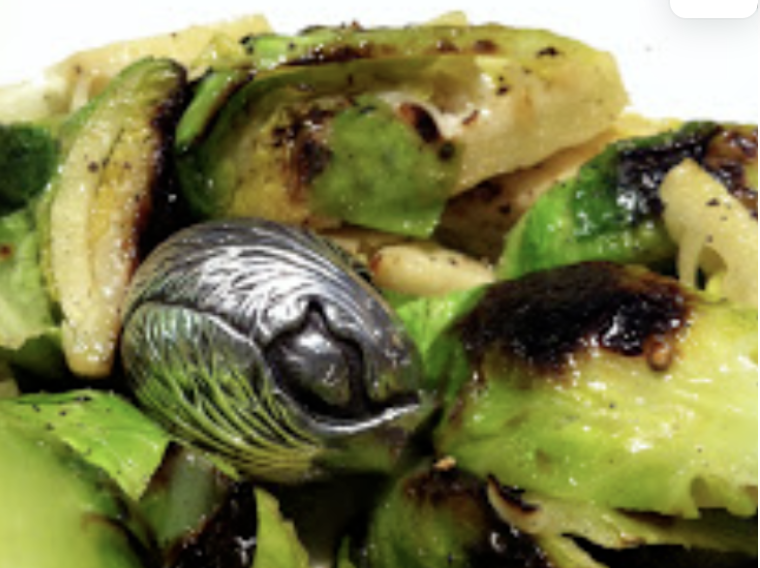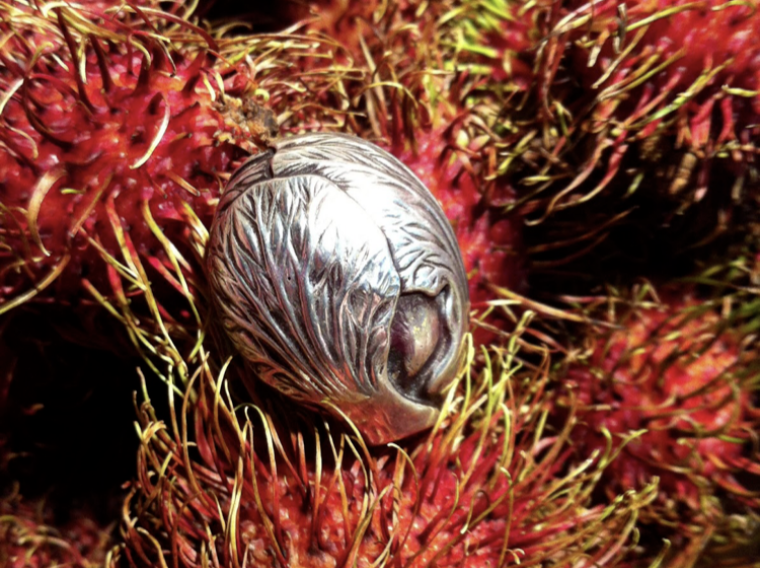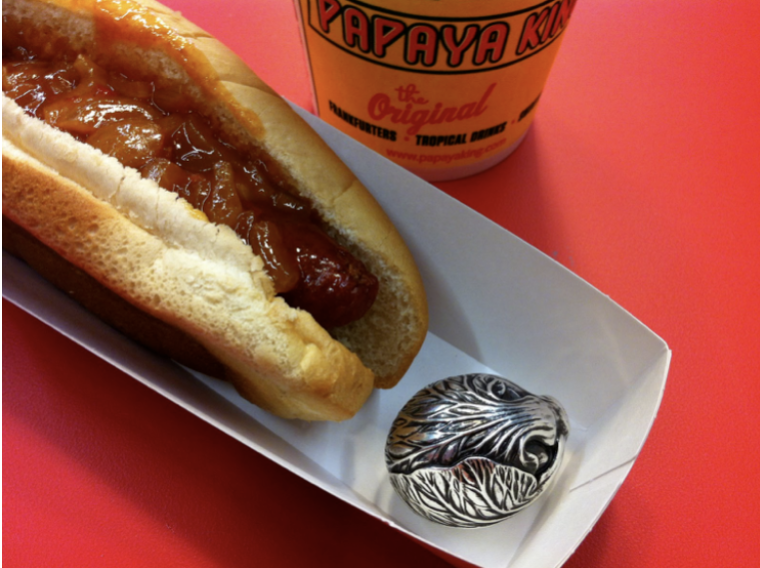Robert Chaplin
“Having spoken to Robert Chaplin for over an hour, I was sold on his work. I had no idea why I needed a bronze brussel sprout, but I did.”
— Sandra Botnen, curator
“The Lorax does not get to speak for the trees”
There is a serious side to Robert Chaplin’s work but without learning more about the artist, you might be hard pressed to find it. What originally attracted me was the lightheartedness of his cast in bronze, silver and 18K gold, life-sized Brussel sprouts. As a carver, his prefers tools and materials that lend themselves to small sized works. “I do not like the idea diminutive pieces,” he adds. “I want my subject matter to be actual size”, he says.
On the subject of brussel sprouts, says he likes to anthropomorphize them, calling them “the most divisive of all vegetables”. “Its their oppositional nature that attracts me and makes them worthy subjects. People love to love them, or love to hate them,” he says, confiding that he personally dislikes them. Though, ultimately he is grateful for the vegetable that launched him into a kind of Brussel spout fame. Along the lines of the well a travelled garden gnome, the sprout has been photographed all around the world and he has attended numerous dinner parties where the controversial vegetable was served in his honor. For those who don’t like Brussel sprouts, and plan to attend a holiday dinner, he recommends carrying one of his pocket-sized sculptures. “When the bowl of sprouts is passed around the table, you can politely say, “No thank you. I brought my own”, placing one of his 18 K gold carvings next to their plate.”
Robert Chaplin grew up in Smithers, BC, where his first encounters with sculpture were the Totem Poles of the Gitxsan people. The irony and humor of his work may well trace back to this very predicament. The poles he admired as a child belonged to a story-telling culture and the people indigenous to that land. Story-telling is at the heart of Chaplin’s work, but the stories of the Pacific Northwest carvers were not his stories to tell. “The Lorax does not get to speak for the trees”, he repeats. It is a strongly held belief that seems to humble, temporarily limit, and ultimately define him as an artist. He is well versed in the political underbelly of Canada and issues surrounding The Indian Act. He moves carefully around the subject, not out of political correctness but rather an appropriate respect and understanding of cultural appropriation and its violation on a peoples’ dignity. He tackles the subject matter is his piece, Raven Transforming into a Lawyer, which illustrates the disfunction of Canada and its existence on stolen land.
For Robert Chaplin, the artistic process is steeped in storytelling and the results most often illustrative. But the political predicament of the First Nations people is not his to illustrate. Instead he looks to his own predicament which has him playing in perhaps a shallower pool when it comes to the politics of a nation. His series titled Barrel of Monkeys - Full Fathom Firkin, looks back at the Hasbro toy of the 70’s that he played with a kid. Linking the monkeys arm in arm was not that interesting but it would have to do as entertainment at the cabin where there was nothing else. His first casting of the iconic S shaped monkey was genderless. “Originally, the monkey had no junk” he said. Later he decided to recast a new series of monkeys with male genetalia, and female genetalia. “He’s. She’s. And They’s!” he says displaying them over Facetime, and showing me the added details. Chaplin shows no apparent interest in gender identity politics but I detect an excitement of energy surrounding the paradigm shift from a genderless barrel of monkeys to a new breed of multi-gendered monkeys and its possible implications. Another catalyst for Robert Chaplin’s trademark sense of humor and freedom.
Having spoken to Robert for over an hour, I was sold on his work. I had no idea why I needed a brussel sprout, but I did. It would do very little to cover the walls space in my home it was trying to fill, but it didn’t seem to matter. Pocket sized art meant I could take it with me anywhere. In the end, the integrity of this artist makes him a purely Canadian conundrum of identity by virtue of not being overly interested in recognition and identity. His work speaks for itself as does he, and his voice is an important piece of the puzzle when it comes to cultural relations. For me, his work cast in bronze, silver and gold are timeless, they speak to a peaceful co-existence within a nation and ideals that give way to lasting value.
Chaplin’s hockey puck titled, Starry Night in Canada.












